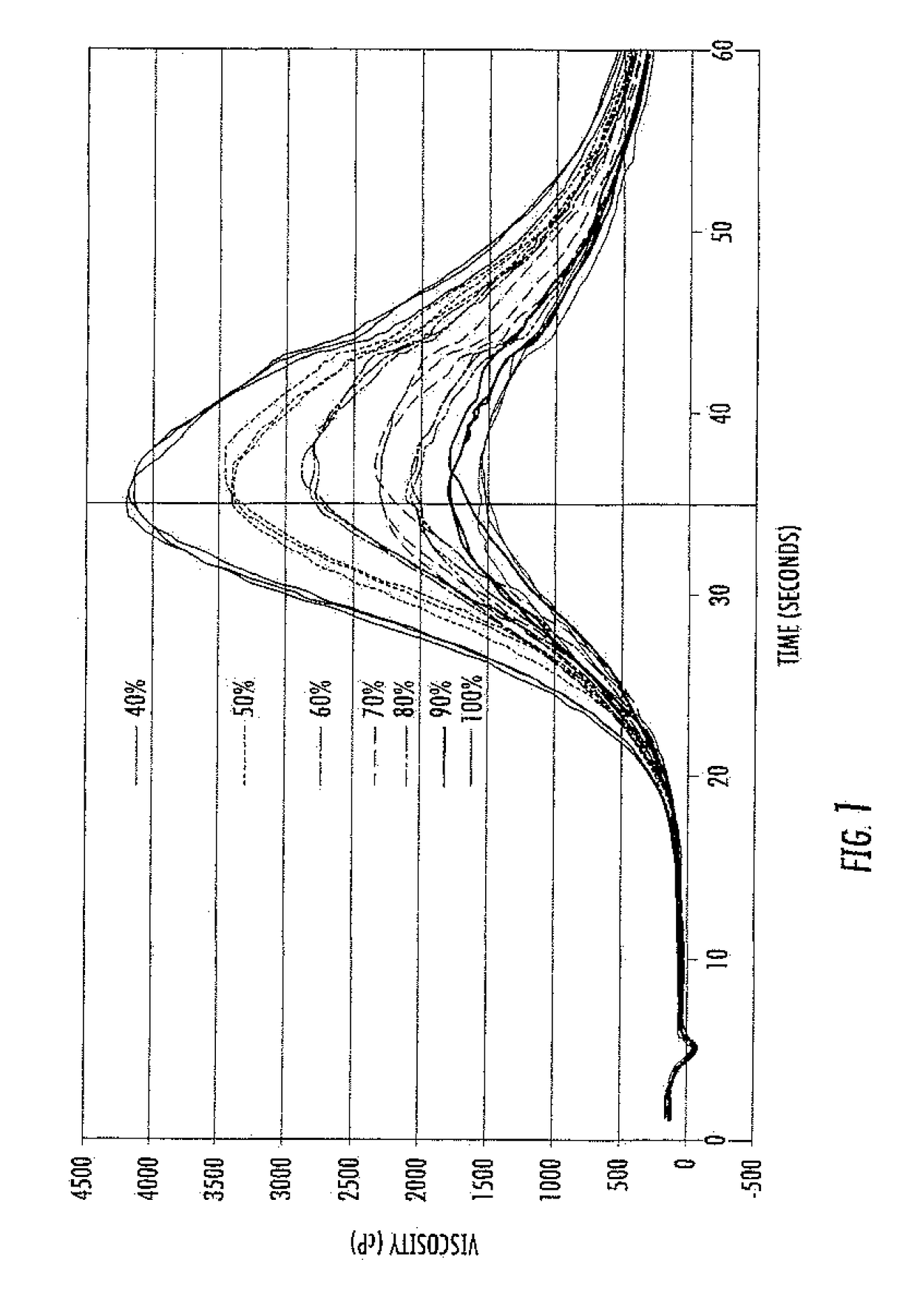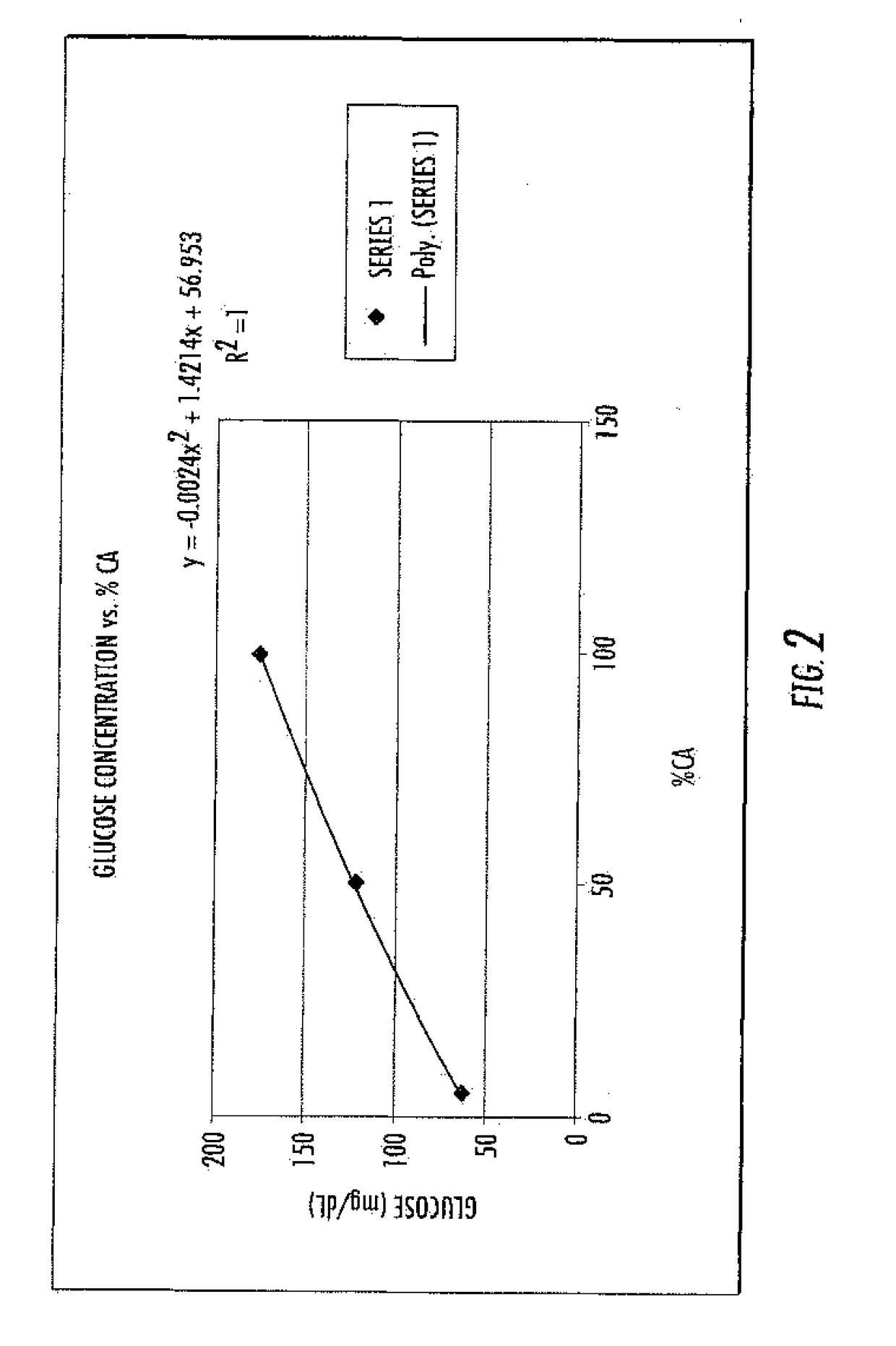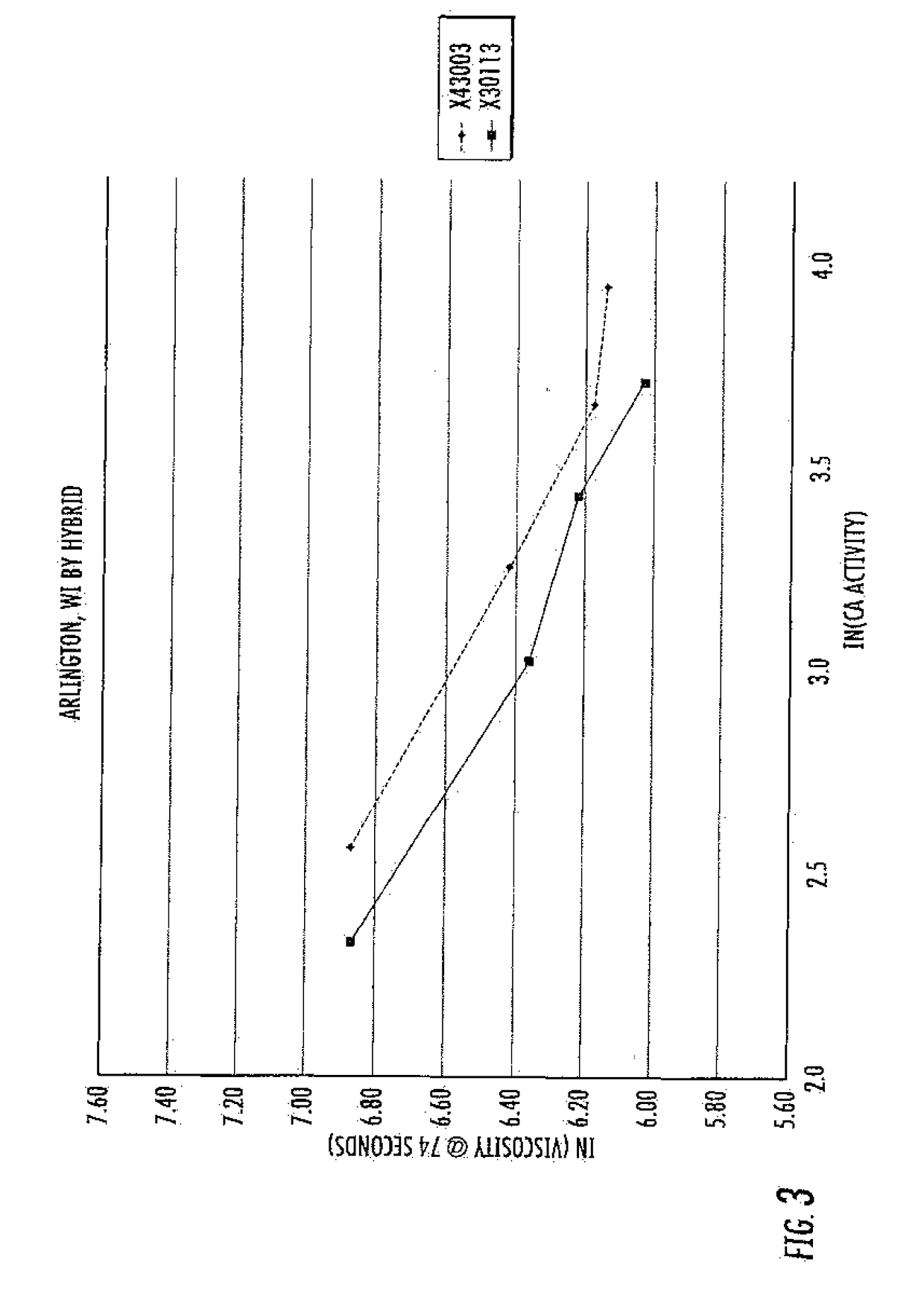Methods for distinguishing and identifying plant varieties
a plant variety and phenotypic characteristic technology, applied in the field of methods of distinguishing and identifying plant varieties, can solve the problems of expensive methods, time-consuming, and inability to distinguish or identify plant varieties by phenotypic characteristics, and achieve the effect of rapid and reliable assay
- Summary
- Abstract
- Description
- Claims
- Application Information
AI Technical Summary
Benefits of technology
Problems solved by technology
Method used
Image
Examples
example 1
Modified Fast Assay for Amylase
[0179]Methods.
[0180]Modified fast assay for corn amylase: approximately 200 g of seed was ground (i.e., dry milled) separately for each hybrid to flour in a Perten® 3600 Disc Mill (setting 0; Perten Instruments AB; Huddinge, Sweden). Next, approximately 9 g of flour was weighed into a Strarchmaster® 2 Viscometer (Newport Scientific Pty. Ltd.; Warriewood, Australia) and mixed with water to create a 28% dry solids corn slurry. The corn slurry has an acceptable buffering capacity, so it was not necessary to add agents to control pH.
[0181]The temperature of the corn slurry reaction mixture in the viscometer was set to 80° C. with continued agitation and a gradual ramping up of the temperature to 95° C. The test profile was carried out as shown in Table 1.
TABLE 1Test profile for viscosity measurements in corn amylase.Time (min:sec)Temperature (° C.)Agitation Speed (rpm)00:008096000:04Ramp to 9516001:149516001:14END—
Viscosity, agitation speed and temperature...
example 2
Modified Fast Assay for Corn Amylase Using a Standard Coffee Maker
[0182]Methods.
[0183]Corn amylase assay in standard coffee maker: 15 g of corn flour containing a thermo-tolerant α-amylase is added to a coffee filter fitting a standard 4 cup coffee maker such as a Mr. Coffee® 4-Cup Dispenser (Sunbeam Products, Inc.) (or any non-programmable standard coffee maker). 60 g of tap water is then added to the pre-heated coffee machine. The vaporized water is collected in the filter container with the pre-weighed corn flour and held for 1-3 minutes before dispensing. Pressure is applied to the filter to ensure full liquid collection.
[0184]Amylase quantification: The collected sample from the coffee machine is mixed and a glucose meter is used to determine the glucose concentration, which can be used to determine the dose of amylase in the flour. A glucose meter such as the ReliOn® Ultima Glucose Meter (ReliOn) may be used for measuring glucose levels. The glucose meter is used according to ...
example 3
Generation of Maize Hybrid Standard Curves
[0186]Standard curves correlating viscosity with alpha-amylase activity were generated for three corn hybrids grown in various environmental conditions expressing a thermophilic α-amylase, 797GL3 (See FIGS. 3-10). It is intended to use the resulting standard curves to quickly distinguish one hybrid from another by measuring viscosity over a predetermined period of time (approximately 74 seconds) in the presence of an alpha-amylase. Thus for example, one could identify an unknown maize hybrid expressing a thermophilic α-amylase by 1) grinding seed of unknown hybrid (10-100 grams is sufficient) to flour; 2) Weigh approximately 9-20 grams of flour into a viscometer such as a Starchmaster® 2 Viscometer (Newport Scientific Pty. Ltd.; Warriewood, Australia); 3) mix with water to create a 28% dry solids corn slurry; 4) continue agitation via a gradual ramping up of the temperature to 95° C. (for example as shown in Table 1) measuring final viscosit...
PUM
| Property | Measurement | Unit |
|---|---|---|
| temperature | aaaaa | aaaaa |
| temperature | aaaaa | aaaaa |
| temperature | aaaaa | aaaaa |
Abstract
Description
Claims
Application Information
 Login to View More
Login to View More - R&D
- Intellectual Property
- Life Sciences
- Materials
- Tech Scout
- Unparalleled Data Quality
- Higher Quality Content
- 60% Fewer Hallucinations
Browse by: Latest US Patents, China's latest patents, Technical Efficacy Thesaurus, Application Domain, Technology Topic, Popular Technical Reports.
© 2025 PatSnap. All rights reserved.Legal|Privacy policy|Modern Slavery Act Transparency Statement|Sitemap|About US| Contact US: help@patsnap.com



